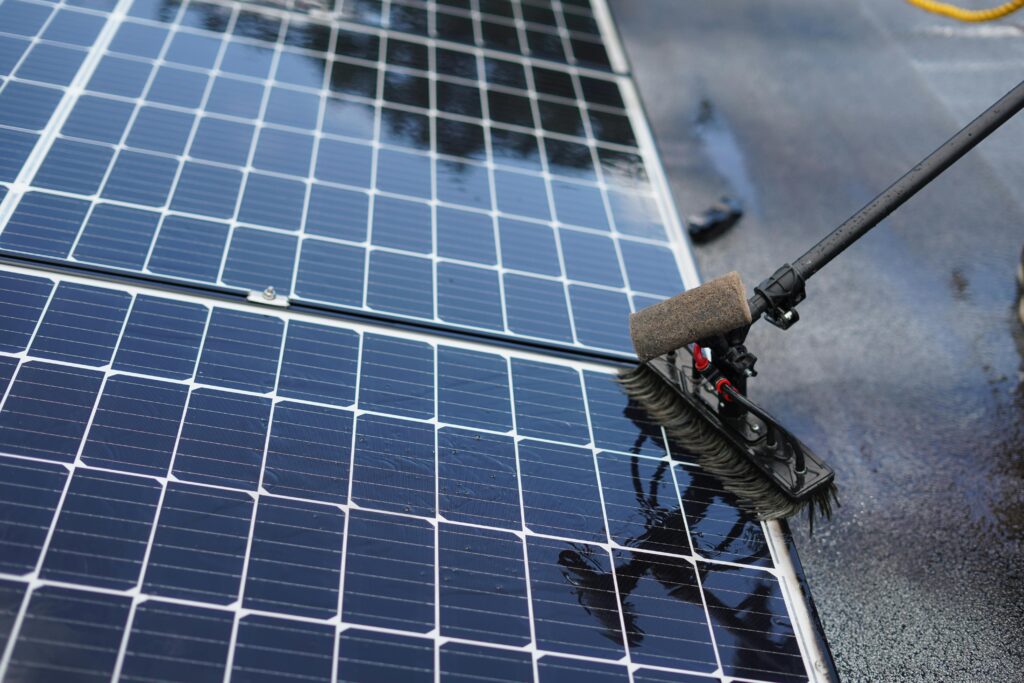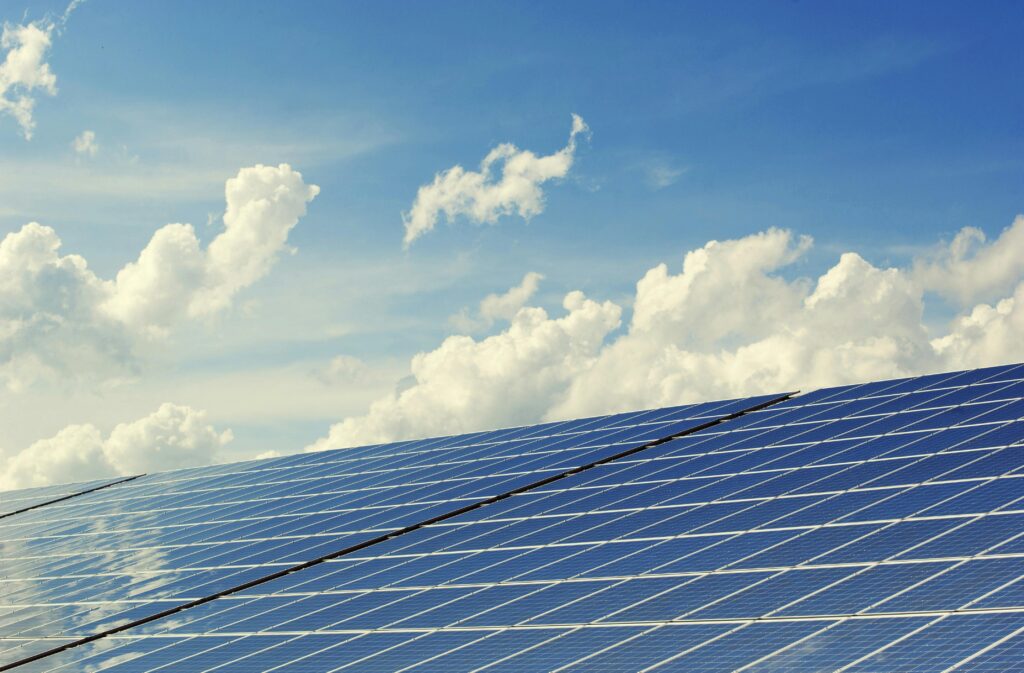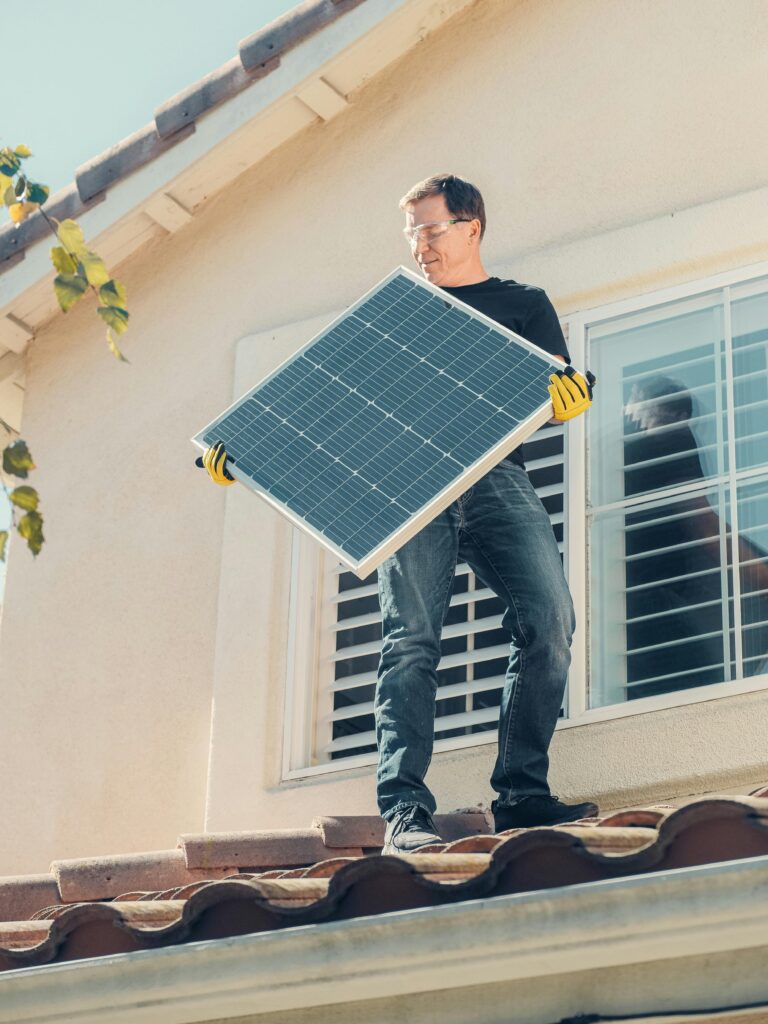Solar panels remain a smart investment for homeowners in 2025. The lifetime savings range between $31,000 and $120,000. Prices have dropped by a lot over the last decade – about 31% lower. Homeowners start saving money on their electricity bills right after installation.
Solar panel installation costs are now available to more people thanks to better manufacturing and market competition. On top of that, the federal 30% solar tax credit helps homeowners save around $9,000 in taxes. The average 11-kilowatt system costs about $28,160 before any incentives. Most homeowners recover their investment within 10 years. Solar panels last 25-30 years or longer, which means free energy for many years after breaking even.
This piece gets into what homeowners really pay to install solar panels in 2025. We’ll look at cost factors, possible savings, and incentives that make solar power more budget-friendly.
What is the average cost of solar panels in 2025?

Image Source: Residential Solar Panels
Homeowners planning to switch to solar energy in 2025 need to know their investment requirements. Let’s get into the current pricing situation in the United States.
National average cost before and after incentives
Residential solar systems typically cost between $25,000 and $45,000 before incentives. Most homeowners pay around $29,360 for a standard installation. The 30% federal solar tax credit brings this amount down substantially to about $20,552.
Different states show varying costs. Texas homeowners pay $2.84 per watt, while New York City residents shell out roughly $4.00 per watt. States with competitive solar markets give better deals – Arizona charges $2.54/watt and Florida $2.56/watt, compared to Massachusetts at $3.45/watt.
Cost per watt explained
The standard way to compare solar pricing uses cost per watt. This number shows what you pay for each watt of power your system produces. The national average in 2025 sits between $2.52 and $3.30 per watt.
Prices have fallen dramatically since 2010, when costs were $7.50 per watt, compared to around $3.00 per watt today. This price covers everything – equipment, installation, permits and interconnection fees.
How system size affects total price
Your total investment depends on system size. U.S. homes need between 6-11 kilowatts of solar capacity, based on their energy use and location.
Bigger systems cost less per watt. Here’s what you can expect:
- 4kW systems cost $3.40 per watt ($9,520 after tax credit)
- 8kW systems cost $2.77 per watt ($15,512 after tax credit)
- 10kW systems cost $2.65 per watt ($18,550 after tax credit)
Larger systems need more money upfront but give you better value per watt. The concept works just like bulk buying – your total cost goes up, but you pay less for each unit. Your home’s energy consumption and size determine how many panels you need.
Key factors that influence solar panel installation cost

Image Source: Residential Solar Panels
Solar panel costs depend on several important factors beyond the simple price per watt. Homeowners need to understand these variables to get a better picture of their actual expenses.
Roof condition and orientation
Your roof’s structural condition affects installation costs directly. Older roofs might need repairs or complete replacement before they can support solar panels. The roof’s pitch and layout also determine labor needs. Steeper slopes and complex designs take more time and money to work with. Some roofing materials, such as clay tiles or specialty roofing, need special mounting hardware and expert installation.
Sunlight exposure and location
Your geographic location shapes solar costs through environmental and economic factors. Areas that get more sun need fewer panels to generate the same power. Local weather patterns determine how durable your equipment needs to be. Labor rates change by region. You’ll pay more for installations in expensive cities like San Francisco compared to areas with lower wages. Your local permit fees can add $500 to $2,000 depending on what your municipality requires.
Type and efficiency of solar panels
The panel technology you choose affects both performance and price. Monocrystalline panels give you 15-22% efficiency ratings but come at premium prices. Polycrystalline options deliver 13-17% efficiency and are more affordable. Thin-film panels cost the least but work best in specialty applications rather than homes. High-efficiency panels might cost more upfront but you’ll need fewer of them overall.
Battery storage and inverter costs
Battery storage adds about $9,000 to your system costs for an 11.4 kWh capacity battery. Battery prices vary by brand. Tesla’s options cost around $1,000/kWh while Generac’s cost $1,961/kWh. You’ll need inverters to convert DC to AC power, which cost between $800-$5,000 based on type and capacity. Microinverters ($2,700-$10,200) cost more than string inverters ($1,000-$3,000) but handle complex roof layouts better.
Labor, permits, and soft costs
Soft costs make up over 50% of your total solar expenses. These include installation labor (about 7% of total cost), permits and inspections (5%), and company overhead. You’ll save money by installing batteries with your solar panels instead of adding them later. Your final price also depends on interconnection fees, licensing requirements, and local tax incentives.
How much can homeowners actually save with solar?

Image Source: Solar.com
Solar panels give homeowners amazing returns that go beyond helping the environment. The money you save builds up over decades, making solar power a smart investment choice.
Typical 25-year savings range
Long-term savings make solar’s financial benefits crystal clear. After installing solar panels, homeowners can save $31,000 to $100,000 over 25 years. Location plays a big role in these savings. California homeowners save about $104,498 over 25 years because they pay higher electricity rates. Even in states with cheaper electricity, the benefits add up. Washington residents save roughly $31,688 during this period.
Payback period by state
Your location determines how quickly you’ll recover your investment. Recent data shows payback times range from 3.87 years in Washington D.C. to 19.91 years in Utah. States that combine plenty of sunshine with high electricity rates see faster returns. The quickest payback periods come from Massachusetts (5.35 years), California (5.15 years), and Illinois (4.27 years). Tennessee (15.73 years) and Idaho (14.41 years) take longer to break even.
Impact of rising electricity rates
Electricity prices have jumped 32% in the last decade—rising 2.8% each year. This trend makes solar an even better investment as time goes by. Solar panels help you lock in your energy costs. Each time utility rates go up, your savings grow bigger. Your system becomes more valuable every year as you dodge these rising costs.
Real homeowner savings examples
Real-life examples show solar’s financial benefits clearly. A case study revealed an 8.00 kWp system costing £13,203.23 saved £100,890 over its lifetime. Another example shows an 8.01 kW system in Plymouth that cut electricity use by 178% and slashed energy bills by half. Most homeowners break even within 4-6 years. After that, they get free electricity for the rest of the system’s life.
Incentives and financing options that reduce your cost
Solar installation costs are much lower today thanks to many incentives and financing options. Homeowners across America can now switch to renewable energy without breaking the bank.
Federal solar tax credit (ITC)
The federal Investment Tax Credit (ITC) stands out as the best solar incentive in the country. Homeowners can deduct 30% of their solar system costs from their federal income taxes. This credit covers equipment and installation costs. Battery storage added after 2023 also qualifies. The 30% credit will stay in place until 2032. It drops to 26% in 2033 and 22% in 2034. The ITC has no dollar limit except for fuel cell systems. You must own the equipment and install it at your main or secondary home to qualify.
State and local rebates
Your state might offer extra programs to cut solar costs even more. These include tax breaks, direct rebates, and performance rewards. New York gives tax credits up to 25% of solar costs with a $5,000 cap. Arizona residents can claim a 25% state tax credit up to $1,000. The DSIRE database helps you find all available incentives in your area.
Net metering and SRECs
Net metering lets you bank credits when your panels make more power than you need. Think of it as a power savings account – you only pay for what you actually use. Some states also offer Solar Renewable Energy Certificates (SRECs). You get one SREC for every megawatt-hour (1,000 kWh) of solar power you generate. Utilities buy these certificates at market prices ranging from $3.50 to almost $400, depending on where you live.
Solar loans vs. leases vs. PPAs
You have three ways to finance your solar system. Buying with cash or getting a solar loan gives you ownership and the biggest long-term savings plus all incentives. Solar loans come with fixed payments over 5-25 years. Leases and Power Purchase Agreements (PPAs) need no money upfront but save you less overall. Leases charge fixed monthly rates no matter how much power you make. PPAs bill you for actual electricity use at a set rate per kilowatt-hour. Owning your system usually pays off better in the long run, even with higher upfront costs.
Conclusion
Solar panel installation is a major investment that’s becoming more available to homeowners in 2025. Prices have fallen 31% in the last decade, making clean energy more affordable than ever. The upfront costs usually range from $25,000 to $45,000. However, great incentives cut this cost down quite a bit. The 30% federal tax credit saves thousands off the original cost, and state programs offer many more ways to save.
Several key factors affect the final cost. Your roof’s condition, where you live, how efficient the panels are, and extra items like batteries all make a big difference in price. Homeowners need to think about these things when planning their budget.
Money saved makes an even stronger case for solar power. Most systems pay themselves back in 4-10 years, based on location. After that, you get free electricity for another 15-20 years. Homeowners save between $31,000 and $120,000 over the system’s life – that’s an amazing return on investment.
Electric bills keep going up, which makes solar power even more valuable. Utility costs have jumped 32% in the last decade, and this trend will likely continue. Solar panels help lock in your energy costs and protect you from rising rates each year.
Different ways to pay make solar power available to more people. You can buy panels outright, get a solar loan, lease them, or sign a power purchase agreement. Each choice has its benefits, but owning the panels saves you more money long-term.
Solar energy has evolved from an expensive novelty into a smart financial move. Today’s homeowners who switch to solar not only help the environment but also get great economic benefits that last decades. Lower installation costs, big incentives, and rising electric rates make a strong case to switch to solar power in 2025.
FAQs
Q1. How much do solar panels typically cost for homeowners in 2025? The average cost for residential solar systems ranges from $25,000 to $45,000 before incentives. After applying the 30% federal tax credit, most homeowners pay around $20,552 for a typical installation.
Q2. What factors influence the cost of solar panel installation? Key factors include roof condition and orientation, sunlight exposure and location, type and efficiency of solar panels, battery storage and inverter costs, as well as labor, permits, and other soft costs.
Q3. How much can homeowners save with solar panels over time? Most homeowners save between $31,000 and $100,000 over 25 years after installing solar panels. Savings vary by location, with some states offering quicker payback periods than others.
Q4. Are there still tax incentives available for solar panel installation in 2025? Yes, the federal Investment Tax Credit (ITC) allows homeowners to deduct 30% of their solar system costs from their federal income taxes. This credit is set to remain at 30% through 2032 before gradually decreasing.
Q5. What financing options are available for solar panel installation? Homeowners can choose between cash purchases, solar loans, leases, or power purchase agreements (PPAs). While each option has its advantages, ownership through cash purchases or loans typically maximizes long-term savings and incentive eligibility.